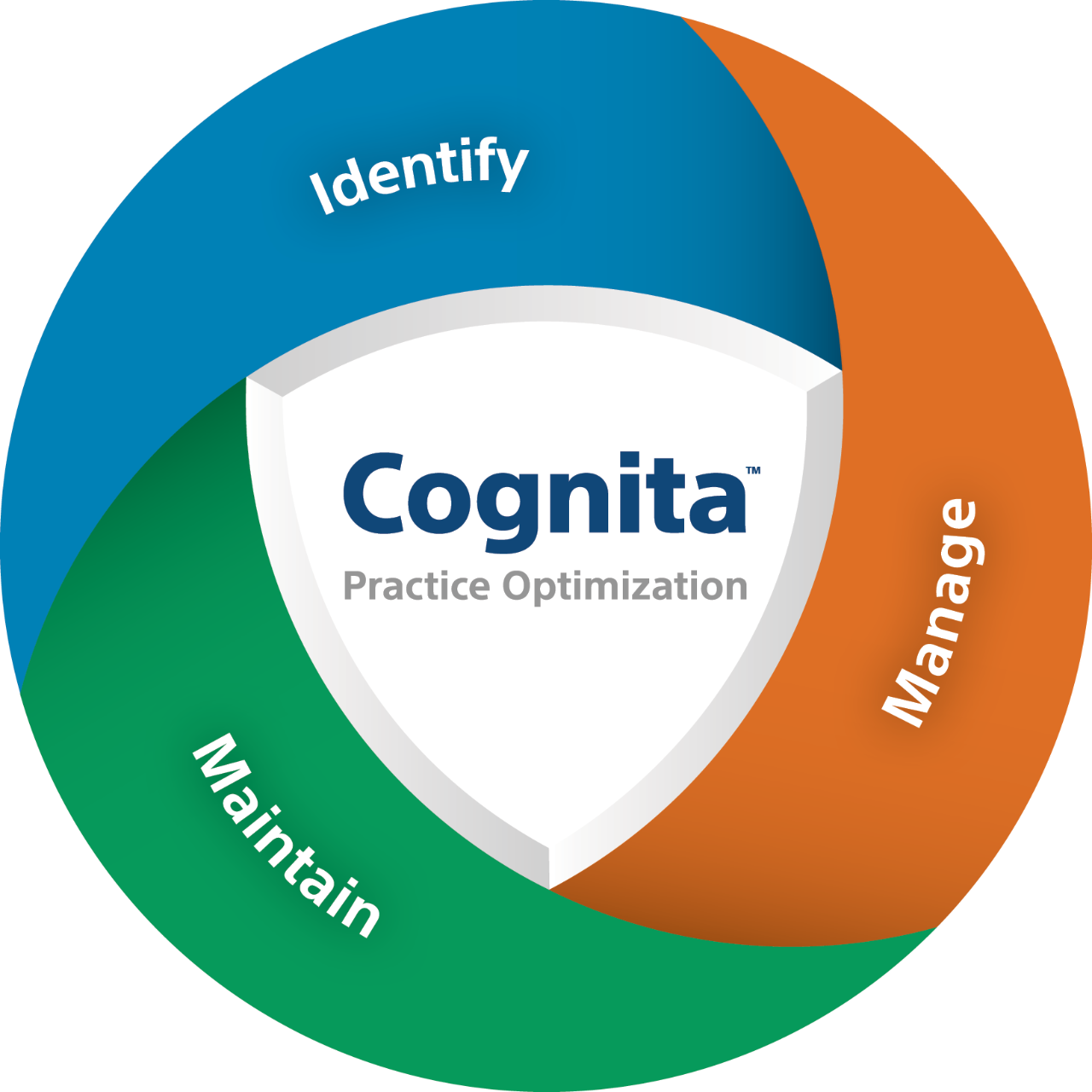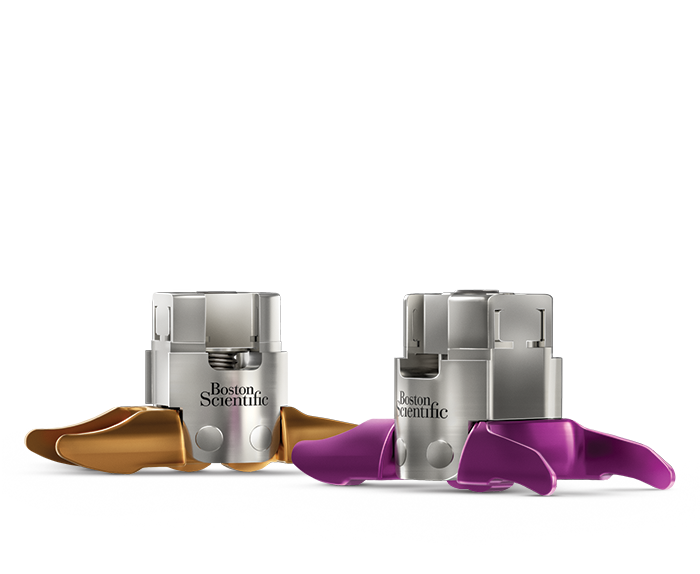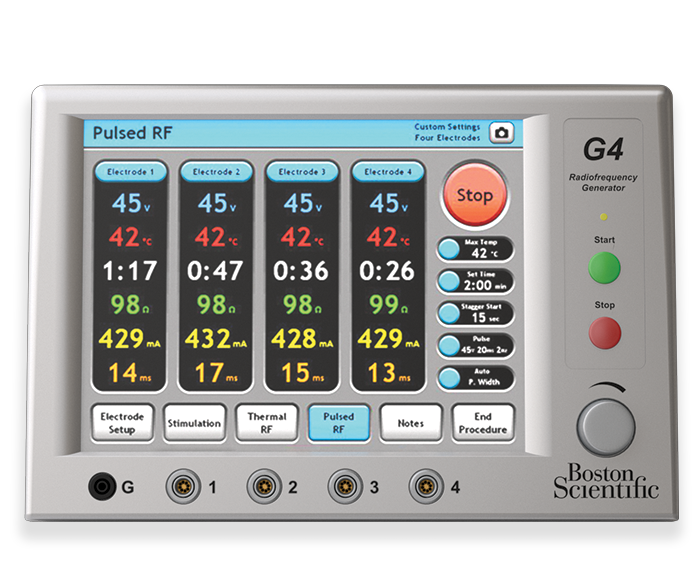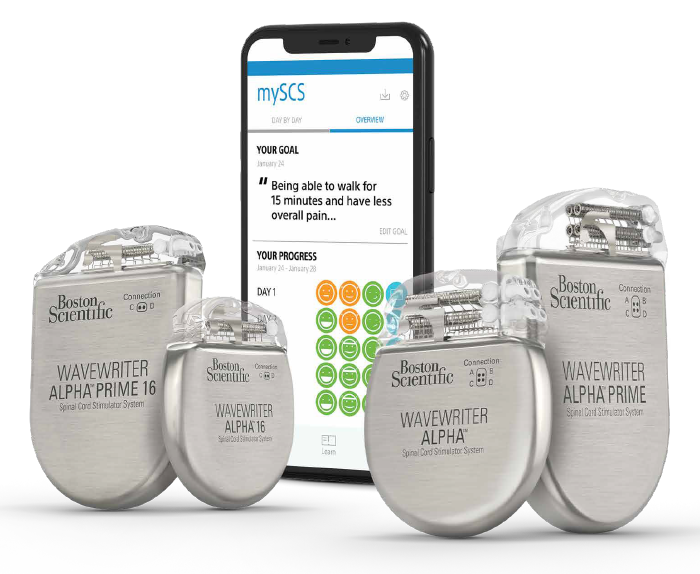INDICATIONS FOR USE: The Boston Scientific Spinal Cord Stimulator Systems are indicated as an aid in the management of chronic intractable pain of the trunk and/or limbs including unilateral or bilateral pain associated with the following: failed back surgery syndrome, Complex Regional Pain Syndrome (CRPS) Types I and II, intractable low back pain and leg pain, Diabetic Peripheral Neuropathy of the lower extremities, radicular pain syndrome, radiculopathies resulting in pain secondary to failed back syndrome or herniated disc, epidural fibrosis, degenerative disc disease (herniated disc pain refractory to conservative and surgical interventions), arachnoiditis, multiple back surgeries. The Boston Scientific Spectra WaveWriter™, WaveWriter Alpha™ and WaveWriter Alpha™ Prime SCS Systems are also indicated as an aid in the management of chronic intractable unilateral or bilateral low back and leg pain without prior back surgery.
Warning: Stimulation modes. Only paresthesia-based stimulation mode has been evaluated for effectiveness in the diabetic peripheral neuropathy (DPN) population.
Refer to the Instructions for Use provided with the SCS System or Pain.com for potential adverse effects, warnings, and precautions prior to using this product.
CONTRAINDICATIONS: Patients contraindicated for permanent Spinal Cord Stimulation (SCS) therapy are those who:
- are unable to operate the System
- have failed trial stimulation by failing to receive effective pain relief
- are poor surgical candidates
- are pregnant
SAFETY INFORMATION WARNING: Unauthorized modification to the medical devices is prohibited. System integrity could be compromised and harm or injury to the patient could occur if the medical devices are subjected to unauthorized modification.
Magnetic Resonance Imaging (MRI) - The WaveWriter Alpha and WaveWriter Alpha Prime SCS Systems are “MR Conditional”. An MRI examination can be conducted safely only when using a 1.5 Tesla horizontal closed bore whole body MRI system for the MRI scan and following all instructions in the supplemental manual “ImageReady™ MRI Full Body Guidelines for WaveWriter Alpha™ and WaveWriter Alpha™ Prime Spinal Cord Stimulator Systems”. The 1.5T MRI system can be configured to use the Full Body, Head, and Extremity transmit/receive RF quadrature coils, and receive only coils of any type. It is important to read the information in the supplemental manual in its entirety before conducting or recommending an MRI examination on a patient with a WaveWriter Alpha or WaveWriter Alpha Prime SCS System. The “ImageReady™ MRI Full Body Guidelines for WaveWriter Alpha™ and WaveWriter Alpha™ Prime Spinal Cord Stimulator Systems” manual appears on the Boston Scientific websites (www.bostonscientific.com/ImageReady and www.bostonscientific-elabeling.com). MRI examinations performed on patients with the WaveWriter Alpha or WaveWriter Alpha Prime SCS System using open-sided MRI systems, or other types of MRI systems operating at other static magnetic field strengths (higher or lower), have not been assessed and, as such, should not be performed. - External Devices: External components (for example, the ETS, Remote Control, and Battery Charger) are MR Unsafe. They must not be taken into any MR environment such as the MRI scanner room.
WARNINGS
Heat Due to Charging (for rechargeable IPGs). Patients should not charge while sleeping. This may result in a burn. While charging, the Charger may become warm. It should be handled with care. Failure to use the Charger with either the Charging Belt or an adhesive patch, may result in a burn. If patients experience pain or discomfort, they should cease charging and contact Boston Scientific.
Pediatric Use. The safety and effectiveness of stimulation has not been established for pediatric use.
Diathermy. Shortwave, microwave and/ or therapeutic ultrasound diathermy should not be used on SCS patients with a stimulator. The energy generated by diathermy can be transferred through the Stimulator system, causing tissue damage at the lead site and resulting in severe injury or death. The IPG, whether it is turned on or off, may be damaged.
Implanted Stimulation Devices. Stimulators may interfere with the operation of implanted sensing stimulators such as pacemakers or cardioverter defibrillators. The effects of implanted stimulation devices on neurostimulators is unknown.
Stimulator Damage. Burns may result if the pulse generator case is ruptured or pierced and patient tissue is exposed to battery chemicals. Do not implant the device if the case is damaged.
Postural Changes. Patients should be advised that changes in posture or abrupt movements may cause decreases, or uncomfortable or painful increases in the perceived stimulation level. Patients should be advised to turn down the amplitude or turn off the IPG before making posture changes. If using therapy that does not produce a sensation (subperception), postural changes are less likely to affect the patient.
Important: If unpleasant sensations occur, the IPG should be turned off immediately.
Electromagnetic Interference. Strong electromagnetic fields can potentially turn stimulation off, cause temporary unpredictable changes in stimulation, or interfere with Remote Control communication. If an electromagnetic field is strong enough to turn stimulation off, this will be temporary and stimulation will automatically return or stimulation can be turned on using the remote control once the electromagnetic field is removed. Patients should be advised to avoid or exercise care around the following:
- Theft detectors, tag deactivators and RFID devices, such as those used at department stores, libraries, and other public establishments: Patients should proceed with caution, ensuring that they move through the center of the detector as quickly as possible. Interference from these devices should not cause permanent damage to the implanted device.
- Security screeners, such as those used in Airport Security or at entrances to government buildings, including hand
-held scanners: Patients should request assistance to bypass the security screener and advise the security staff that they have an implanted medical device. If patients must pass through the security screener, they should move through the security screener quickly and stay as far as allowed from the screener.
- Power lines or power generators.
- Electric steel furnaces and arc welders.
- Large magnetized stereo speakers.
- Strong magnets.
- Automobiles or other motorized vehicles using a LoJack system or other anti-theft systems that can broadcast a radio frequency (RF) signal. The high energy fields produced by these systems may interfere with the operation of the Remote Control and its ability to control stimulation.
- Other sources of electromagnetic disturbance, such as Wi-Fi routers, Cordless Phones, Bluetooth® Wireless streaming devices, Baby Monitors, Microwave Ovens.
Note: When in close proximity, equipment that generate strong electromagnetic fields might cause unintended stimulation or interfere with wireless communication even if they comply with CISPR requirements.
PRECAUTIONS
Physician training is required.
Medical Devices/Therapies. The following medical therapies or procedures may turn stimulation off or may cause permanent damage to the Stimulator, particularly if used in close proximity to the device:
- lithotripsy
- electrocautery (See “Instructions for the Physician” on page 10)
- external defibrillation
- radiation therapy (Any damage to the device by radiation may not be immediately detectable.)
- ultrasonic scanning
- high
- output ultrasound
X-ray and CT scans may damage the Stimulator if stimulation is on. X-ray and CT Scans are unlikely to damage the Stimulator if stimulation is turned off.
If any of the above is required by medical necessity, refer to “Instructions for the Physician” on page 10. Ultimately, however, the device may require explantation as a result of damage to the device.
Sub-perception Therapy. Sub-perception stimulation has been demonstrated to be safe and effective in patients who have been treated successfully with conventional, paresthesia-inducing stimulation for at least six months. Full stimulation parameter ranges and options for both paresthesia -based and sub-perception therapy are available for clinician’s use throughout the patient’s experience and treatment with SCS.
Automobiles and Other Equipment. Patients using therapy that generates paresthesia should not operate motorized vehicles such as automobiles or potentially dangerous machinery and equipment with the stimulation on. Stimulation must be turned off first in such cases. For these patients, any sudden stimulation changes may distract patients from proper operation of the vehicle, machinery, or equipment. For therapy that does not generate paresthesia (e.e., sub-perception therapy) it is less likely that sudden stimulation changes resulting in distraction could occur while having stimulation on when operating moving vehicles, machinery, and equipment.
Post Operative. During the two weeks following surgery, it is important that patients use extreme care so that appropriate healing will secure the implanted components and close the surgical incisions:
- Patients should not lift objects of more than 2.5 kg (5 lb).
- Patients should not engage in rigorous physical activity such as twisting, bending, or climbing.
- If new leads were implanted, patients should not raise their arms above their head.
Temporarily, there may be some pain in the area of the implant as the incisions heal. Patients should be instructed that if discomfort continues beyond two weeks, they should contact their healthcare provider. If patients notice excessive redness around the wound areas during this time, they should contact their healthcare provider to check for infection and administer proper treatment. In rare cases, adverse tissue reaction to implanted materials can occur during this period.
Patients should consult their healthcare provider before making lifestyle changes due to decreases in pain.
Stimulator Orientation. Patients should never attempt to change the orientation of the Stimulator or turn over the Stimulator. Patients should avoid touching the incisions or Stimulator site. If the Stimulator flips over in the Patient’s body, it may be unable to communicate with the Remote Control or Clinician Programmer. If the rechargeable Stimulator flips over in the Patient’s body, it cannot be charged. If the Patient knows that the device has turned, or if stimulation cannot be turned on after charging, the Patient should contact his or her physician to arrange an evaluation of the system. In some cases, the skin over the Stimulator may become very thin over time. If this occurs, Patients should contact their healthcare provider.
Lead Location. In some instances a lead can move from its original location, and stimulation at the intended pain site can be lost. If this occurs, Patients should consult their healthcare provider who may able to restore stimulation by reprogramming the Stimulator in the clinic or repositioning the lead during another operation.
Device Failure. Stimulators can fail at any time due to random component failure, loss of battery functionality, or lead breakage. If the device stops working even after complete charging (up to four hours), Patients should turn off the Stimulator and contact their healthcare provider so that the system can be evaluated.
Operating Temperature. The operating temperature of the ETS and Remote Control is 5 to 40 °C (41 to 104 °F). For proper operation, do not use the Charger if the ambient temperature is above 35 °C (95 °F). Non-rechargeable IPGs will enter storage mode if its temperature falls below 8 °C. When the IPG is in storage mode, it will not connect to a Remote Control or Clinician Programmer. To exit storage mode, increase the IPG temperature above 8 °C.
Storage, Handling and Transport. Do not expose the Remote Control or Charging System components to excessively hot or cold conditions. Do not leave the devices in your car or outdoors for extended periods of time. The sensitive electronics can be damaged by temperature extremes, particularly high heat. If the Remote Control or the Charging System is to be stored for a period of time without batteries, the storage temperature should not exceed -20 to 60 °C (-4 to 140 °F). Handle the system external components and accessories with care. Do not drop them or submerge them in water. Although reliability testing has been performed to ensure quality manufacturing and performance, dropping the devices on hard surfaces or in water, or other rough handling, can permanently damage these components. (See “Limited Warranty - IPG”.) Upon completion of the Patient Trial, remove the batteries from the ETS.
Component Disposal. Do not dispose of the Remote Control or Charger in fire. The battery in these devices can explode in fire. Dispose of used batteries in accordance with local regulations. The IPG should be explanted in the case of cremation, and returned to Boston Scientific. External devices to be disposed of per local regulatory requirements. Patients should contact their healthcare provider.
Remote Control, Charging System, and External Trial Stimulator Cleaning. The charging system components can be cleaned using alcohol or a mild detergent applied with a cloth or tissue. The Remote Control and ETS can be cleaned using a mild detergent applied with a lightly dampened cloth or tissue. Residue from soapy detergents should be removed with a cloth lightly dampened with water. Do not use abrasive cleansers for cleaning. Cleaning wipes for the External Trial Stimulator can also be ordered through Boston Scientific customer service. As an operator of the external devices, perform only the following service and maintenance tasks on the external devices:
- Changing the battery
- Charging the battery
- Cleaning
Ensure that the devices are not in use while performing service and maintenance tasks. Do not clean any of the accessories while they are directly or indirectly connected to a power outlet.
Cell Phones. While we do not anticipate any interference with cell phones, the full effects of interaction with cell phones are unknown at this time. Portable RF communications equipment (for example mobile phones) should be kept a minimum distance of 6 inches (15 centimeters) from the area of the implanted device. If there is a concern or a problem is encountered, the patients should contact their healthcare provider.
ADVERSE EVENTS Potential risks are involved with any surgery. The possible risks of implanting a pulse generator as part of a system to deliver spinal cord stimulation include:
- Lead migration, resulting in undesirable changes in stimulation and subsequent reduction in pain relief.
- System failure, which can occur at any time due to random failure(s) of the components or the battery. These events, which may include device failure, lead breakage, hardware malfunctions, loose connections, electrical shorts or open circuits and lead insulation breaches, can result in ineffective pain control.
- Tissue reaction to implanted materials can occur. In some cases, the formation of reactive tissue around the lead in the epidural space can result in delayed onset of spinal cord compression and neurological/sensory deficit, including paralysis. Time to onset is variable, possibly ranging from weeks to years after implant.
- Skin erosion at the IPG site can occur over time.
- Possible surgical procedural risks are: temporary pain at the implant site, infection, cerebrospinal fluid (CSF) leakage and, although rare, epidural hemorrhage, seroma, hematoma and paralysis.
- External sources of electromagnetic interference may cause the device to malfunction and affect stimulation.
- Exposure to magnetic resonance imaging (MRI) can result in discomfort or injury due to heat near the Stimulator or the leads, tugging or vibration of the implanted system, induced stimulation, damage to the device requiring its replacement, and may distort the image needed for diagnosis.
- Undesirable stimulation may occur over time due to cellular changes in tissue around the electrodes, changes in electrode position, loose electrical connections and/or lead failure.
- The patient may experience painful electrical stimulation of the chest wall as a result of stimulation of certain nerve roots several weeks after surgery.
- Over time, the Stimulator may move from its original position.
- Weakness, clumsiness, numbness or pain below the level of implantation.
- Persistent pain at the IPG or lead site. In any event, instruct the patient to contact their healthcare provider to inform him/her.
Caution: U.S. Federal law restricts this device to sale by or on the order of a physician.




